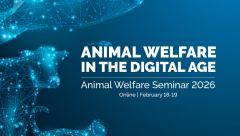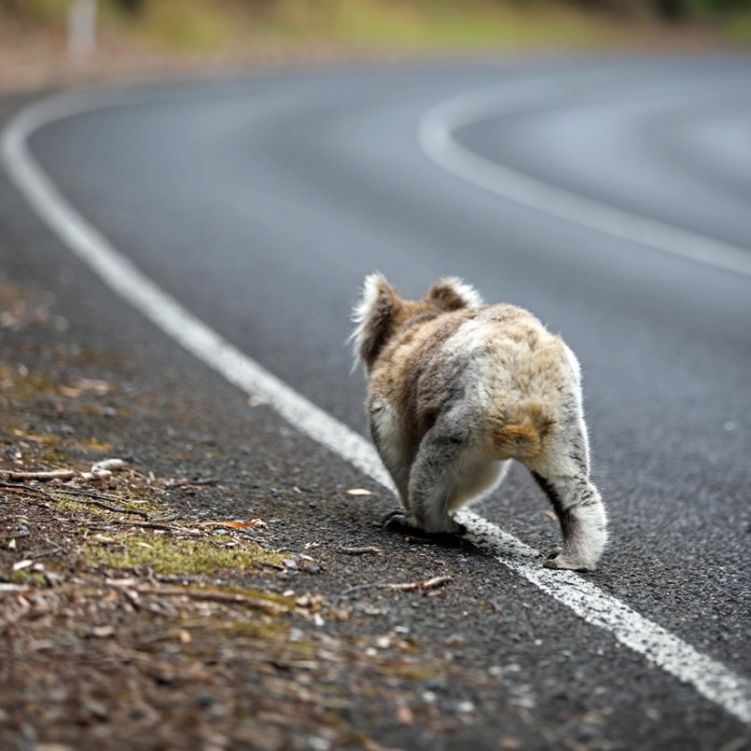Koalas are arguably one of Australia’s most iconic species, adored worldwide for their fluffy ears, sleepy eyes, and eucalyptus fixation. Yet despite their icon status, these once abundant marsupials are now facing challenges that urgently need our attention. Koalas are in crisis, and human activity is largely to blame.
Found mostly in the eucalyptus forests of Queensland, New South Wales and Victoria, koalas are now facing threats from all directions, including habitat destruction, natural disasters, predators, and disease. In fact, koala populations have dropped so significantly that they were officially listed as vulnerable under the International Union for Conservation of Nature (IUCN) Red List of Threatened Species, with Queensland, New South Wales, and the Australian Capital Territory officially declaring koalas as endangered in February 2022.
So, what are the issues driving this crisis, and more importantly what can be done to fix it?
Habitat loss.
One of the biggest threats to koala’s survival is habitat loss. Koalas depend almost entirely on eucalyptus forests for food and shelter so when the environments they inhabit are destroyed, they lose not only their homes but their primary food source as well.
Over the past decades, much of the koala’s natural habitat has been cleared for agriculture, urban development or plantations. As human populations have expanded and industries encroach further upon their habitats, koala populations are forced into more fragmented areas where remaining habitat patches are isolated, smaller, and expose them to additional hazards such as car collisions and predators. Data collected by the Port Macquarie Koala Hospital over a nine-year period up to 2022, found that nearly half of the admissions were associated with negative impacts associated with human activity, including being found in a dangerous area such as a motorway or clinging to a telegraph pole (24.9%), vehicle collisions (17.4%) and dog attacks.
Complicating the issue further is that koalas are selective eaters, as they’ve evolved to draw their nutrients almost entirely from eucalyptus leaves, primarily from just two to seven specific tree species found in their home range, meaning that they cannot simply be relocated to just any area of bushland. This makes the destruction of eucalyptus forests even more devastating and can lead to starvation, increased competition between koalas, and forced long-distance travel which puts them at risk.
Road crossings and vehicle collisions
As their habitats are cleared for new transport and housing infrastructures, koalas are often forced to cross busy roads and highways in order to find viable patches of forest where they can source food or shelter. This can lead to tragic consequences.
In South-East Queensland alone, around 300 koalas are killed each year by motor vehicle collisions. Roads with high speed limits that cut through koala habitats are a deadly barrier for these slow-moving animals to seek food and shelter, especially when they’re already under increased stress or disoriented.
Predation
To meet their nutritional requirements in a fragmented habitat, koalas are forced to move between landscapes, leaving them at risk of predators. As increasing urbanisation encroaches more and more into koala environments, domestic dogs in particular have become a significant threat to koalas, in both suburban and rural areas. Dog attacks are a major cause of serious injury and death for koalas, with a high fatality rate often occurring due to internal damage and infection from bite wounds. Koalas have to travel on the ground between trees, or along fences, making them easy targets.
Even the threat of predation can cause significant stress to koalas, affecting their health and ability to reproduce.
Injury
In addition to injuries from predators and vehicle collisions, koalas are also at risk of being injured during land clearing and tree harvesting operations. Koalas are skilled in camouflage and are often difficult to spot when nestled high in the canopy of eucalyptus trees. This makes locating individuals difficult, even with the use of thermal detection drones, acoustic sensors, or scat surveys.
Therefore, tree-harvesting activities often result in serious injuries or even death of koalas huddled up in the trees that are cut down. A 2024 joint report by Greenpeace and RSPCA Queensland found that 1,200 koalas are killed in the state each year during deforestation activities, with many more injured.
Stress and disease
Koalas living in areas adjacent to land clearing are also impacted by the destruction. In fact, increased levels of stress hormones have been found in wild koala populations exposed several environmental stressors such as habitat clearance, bushfires, and droughts, which can increase vulnerability to disease.
Koalas are particularly susceptible to Chlamydia, a bacterial infection that can cause blindness, infertility, and death. While some koala populations managed to live with the disease for years, extreme weather events like droughts and heatwaves have weakened their immune systems, allowing the disease to spread more aggressively.
In 2008, nine heatwaves struck parts of NSW, and koala populations in those areas saw a spike in infections. It was a clear example of how environmental extremes can not only impact an animal’s psychological health but their physical health as well.
Climate change
Koalas are particularly vulnerable to the mounting effects of climate change, in fact they’re one of the top ten animals most vulnerable to climate change, according to the IUCN Red List.
As extreme weather events grow more frequent and intense, koala habitats are increasingly threated by drought, bushfires, flash flooding and more. It’s estimated that more than 8000 koalas perished during the devastating 2019-2020 bushfire season alone. And the prolonged droughts afflicting parts of the country have led to a lack of viable food and shelter, causing koalas to have weakened immune systems, thereby increasing disease spread with many also starving.
How can koalas be better protected?
The threats impacting koalas are complex and interconnected, but one thing is clear: human activities are at the centre of the issue.
Here’s what needs to change:
- Stronger protections for koala habitats, including restrictions on land clearing and logging in key areas.
- Safe wildlife corridors to allow koalas to move between forest patches without crossing roads.
- Better planning for urban development that considers the needs of native wildlife.
- Public education to reduce dog encounters and support local conservation efforts.
- Research funding to understand the full impact of environmental changes on koala health and populations.
Koalas are a national treasure, but without urgent action, we risk losing them forever. Their fate is tied to how we manage our land, our cities, and our environment.
Improving the welfare of wild koalas requires a multifaceted approach, one that preserves the ecosystems they live in and recognises that our choices have consequences.
By implementing targeted strategies to prevent injuries, reduce stressors, and enhance habitat quality, we can help ensure a brighter future for koalas in the wild, and safeguard a sustainable environment for these iconic marsupials to thrive for generations to come.







